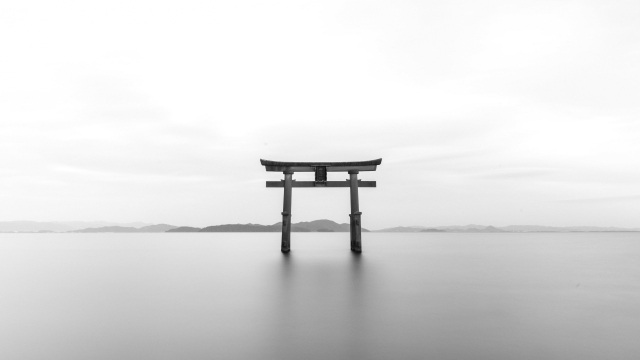
Japan is a land steeped in tradition and spirituality, where the delicate balance of nature and the sacred intertwine. Among its many revered sites, shrines serve as essential pillars of Japanese culture, offering a glimpse into the country’s rich history and intricate beliefs. Each shrine holds its own story, drawing visitors from around the globe who seek to connect with the divine and explore the essence of Shinto, Japan’s indigenous spirituality.
In this exploration of shrine rankings in Japan, we will journey through some of the most significant and awe-inspiring shrines that embody the spirit of the nation. From the majestic torii gates that mark the entrance to sacred spaces, to the tranquil ambiance of moss-covered pathways, these shrines reflect not only architectural beauty but also the deep-rooted reverence the Japanese people have for their heritage. Whether you are an avid traveler or an armchair adventurer, join us as we unveil the top shrines and the unique experiences they offer.
Historical Significance of Japanese Shrines
Japanese shrines, known as "jinja," hold immense historical significance as they are deeply intertwined with the cultural and spiritual fabric of the nation. Established over centuries, these sites have served as focal points for worship, community gathering, and the preservation of traditions. The reverence for nature and ancestral spirits is prevalent, reflecting the Shinto belief system that emphasizes harmony with the natural world. Many shrines are erected at locations of natural beauty, symbolizing the connection between the divine and the earthly.
Throughout history, shrines have played essential roles in various socio-political contexts, acting as centers of power and influence. During the feudal era, shrines often served the interests of local lords and samurai, providing spiritual legitimacy. Festivals held at these shrines, known as "matsuri," have celebrated seasons, agricultural cycles, and historical events, thus enriching the community’s identity and continuity. The architectural styles of these shrines often reflect the periods in which they were built, with each structure telling a story of craftsmanship and devotion.
Today, the significance of Japanese shrines extends beyond their historical roles; they continue to be places of pilgrimage, cultural exchange, and spiritual reflection. These sacred spaces attract millions of visitors annually, who come to seek blessings, engage in rituals, and admire the intricate designs. The preservation of shrines ensures that the rich history and traditions of Japan are honored and passed down through generations, making them vital markers of the nation’s heritage and collective memory.
Top 5 Shrines to Visit in Japan
Japan is home to countless shrines, each with its own unique charm and significance. Among them, Ise Jingu stands out as a symbol of Shinto spirituality and nationalism. Located in Mie Prefecture, this grand shrine is dedicated to the sun goddess Amaterasu and is considered the most sacred in Japan. Visitors are drawn to its serene forest surroundings, traditional architecture, and the deep sense of reverence that permeates the grounds. Exploring Ise Jingu offers a glimpse into the heart of Japanese culture and spirituality.
Another must-visit shrine is Fushimi Inari Taisha in Kyoto, famous for its thousands of vermillion torii gates that create stunning pathways up the sacred Mt. Inari. This shrine is dedicated to Inari, the Shinto god of rice and agriculture. The hike through the torii gates is both an enchanting experience and a spiritual journey, as you encounter small shrines and fox statues, which are believed to be Inari’s messengers. Fushimi Inari Taisha attracts both tourists and locals, making it a vibrant place to witness the intersection of nature and spirituality.
Meiji Jingu, located in Tokyo, is another key destination for those interested in Japan’s sacred sites. Situated within a vast forested area near the bustling city, this shrine honors Emperor Meiji and Empress Shoken. The approach to Meiji Jingu is tranquil, providing a peaceful escape from the urban environment. Visitors can partake in rituals such as making wishes or purchasing amulets, all while absorbing the rich history and significance of this revered location. Meiji Jingu embodies the blend of tradition and modernity, making it an essential stop on any shrine pilgrimage in Japan.
Cultural Practices at Shrines
Visiting Shinto shrines is more than just a visual experience; it is an immersion into cultural practices that have been honed over centuries. One of the most common rituals people partake in is the purification ceremony, known as temizu. Visitors cleanse themselves at a water basin, washing their hands and mouth to symbolize the removal of impurities before approaching the sacred space. This act not only prepares the individual spiritually but also reinforces the importance of cleanliness in Shinto traditions.
Another significant practice at shrines is the act of offering, or sh offerings. Visitors often present coins, rice, or other symbolic items at the altar to show respect and express gratitude to the kami, or spirits. It is customary to bow before making an offering, followed by the ringing of a bell, which serves to attract the attention of the kami. This interaction highlights the deep spiritual connection that practitioners feel toward their faith and the reverence they have for the sacred.
Festivals, or matsuri, are vital cultural events celebrated at shrines throughout Japan. These lively gatherings often feature traditional music, dance, and processions, creating an atmosphere of joy and community. Participants engage in rituals to honor the kami and seek their blessings for good fortune and prosperity. The vibrant colors and festive spirit of these celebrations draw both locals and tourists alike, making them a significant aspect of Japan’s cultural identity and a captivating experience for all who attend.
Preservation and Modernization of Sacred Spaces
The delicate balance between preserving historical integrity and embracing modernization is vital for Japan’s sacred shrines. Many of these sites, rich in cultural significance, have weathered centuries of natural and human-induced challenges. Efforts to protect these sacred grounds range from meticulous restoration projects to the implementation of conservation technologies that ensure structural stability without compromising aesthetics. As a result, visitors can experience these spiritual places in their authentic forms while appreciating the craftsmanship that has been passed down through generations.
Japan Shrine Guide: Top Picks
At the same time, the integration of modern facilities has become essential in attracting visitors and enhancing their experience. Amenities such as information centers, improved accessibility, and eco-friendly initiatives are becoming part of more shrine complexes. These upgrades are not only designed to accommodate the needs of today’s visitors but also to foster a deeper understanding of the traditions that define these spaces. Through thoughtful modernization, shrines are able to welcome a diverse range of individuals, ensuring that age-old practices remain relevant and relatable to contemporary society.
However, the challenge remains to maintain the sanctity of these spaces amidst the encroachment of modernity. Stakeholders, including local communities, religious leaders, and conservation specialists, must engage in open dialogue to establish guidelines that respect both heritage and innovation. Initiatives that involve community participation in preservation efforts are particularly promising, as they cultivate a sense of ownership among locals and promote a shared responsibility for maintaining these treasured sites. By addressing these complexities, Japan can ensure that its sacred grounds continue to resonate with past, present, and future generations.


